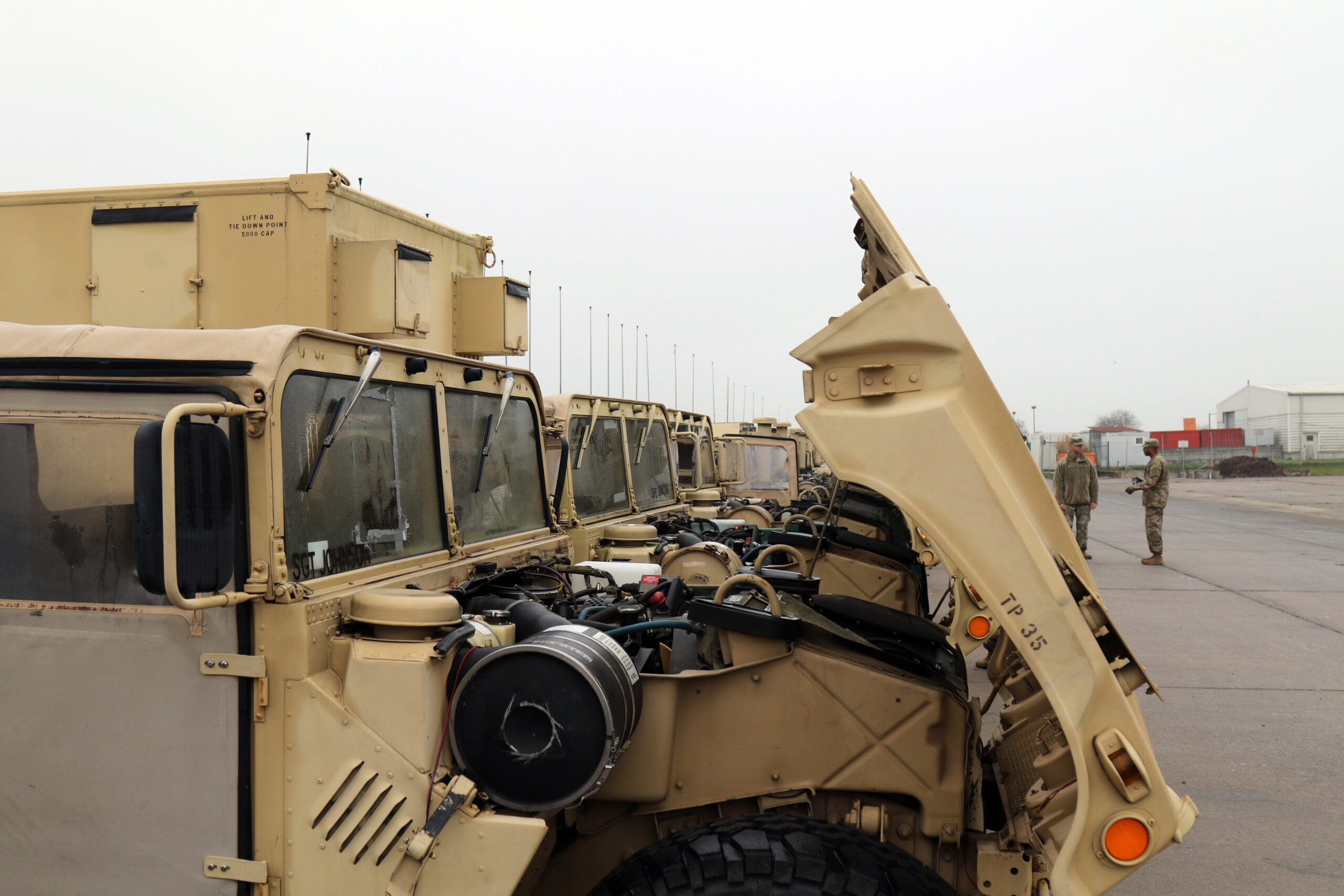

Under current Army rules, mechanics service most of the service’s 200,000 trucks every six months — whether they need it or not. In the case of a Humvee, that usually means using a full ‘service kit’ with new air and engine filters, oil changes, and a slew of replacement parts, even if the vehicle has hardly moved.
“We may service a vehicle that has gone 100 miles in a year,” said CW5 Robert Lakes. “The common sense approach is, I wouldn’t do that to my personal vehicle so why am I wasting resources doing that to our military fleet?”
All those oil changes add up. Army Chief of Staff Gen. Randy A. George said this week that “unnecessary maintenance” annually costs the service 632 man-years.
Now under a program spearheaded by Lake and a group of senior officials, the Army wants to stop soldiers from doing “unnecessary maintenance” both on servicing vehicles and on the 800,000 rifles the Army owns.
“By making even modest changes to maintenance intervals for our fleet we will reallocate 632-man-years of time annually across the Army,” George said in remarks at the Association of the United States Army’s 2023 conference in Washington D.C.. “632 – that translates to more training time and more family time.”
For rifles, the time-savings could translate to 284 man-years, according to Rick Marsh, director of maintenance programs & policy.
Subscribe to Task & Purpose Today. Get the latest military news and culture in your inbox daily.
The goal is to switch from time-based maintenance, like regular six-month oil changes, to servicing equipment based on its usage. The initiative, launched in May 2023, is based on feedback from field commanders and senior maintainers.
The proposed changes will impact about 200,000 wheeled vehicles across the Army and about 800,000 M4 and M16 rifles.
In armories, the new rules could cut annual maintenance work in half, replacing quarterly servicing of M4 and M16 rifles with a semi-annual service.
Lakes, who works as a senior ordnance logistics officer at Joint Base Lewis-McChord, said the changes will affect just about every person on every Army installation. The proposal reaches across most tactical vehicle platforms and should reduce the workloads of operators, maintainers, and soldiers that “put scheduled maintenance on training calendars and plan resources.”
“This is going to reduce the amount of keystrokes that we have to put in computers. It’s going to reduce the amount of maintenance we’re doing on the equipment. It’s going to reduce the man hours that we’re having to expend,” Lakes said.
Under the new rules, one official said, soldiers would see particular benefits in the weeks before a deployment. As an example, the official said, a unit with a large number of trucks might need eight weeks to deploy — loading onto trains and boats in the U.S., crossing an ocean, and unloading at an operational site. Under current rules, every truck that might come due for service during those eight weeks would have to be serviced beforehand.
“That’s time Soldiers could be spending with family,” the official said.
The working group found that the Army was also still relying on outdated, manual ways of doing maintenance.
“A lot of these processes are still paper-based and we know they shouldn’t be,” Marsh said. As technology improves and proliferates the Department of Defense and its services, the advent of AI-based predictive maintenance will also play a role, he said.
They also found maintenance challenges with the size and variability of Army fleets. The more types of equipment in motor pools, the more systems that maintainers have to be familiar with, Marsh said.
One daily motorpool chore that will not be affected by the new rules, however, is Motorpool Mondays.
Officials confirmed that the new rules will not affect the use of operator preventive maintenance checks and services, or PMCS forms. Soldiers will still need to fill out the infamously detailed forms on a vehicle’s health before and after use.
For vehicles, the new rules will apply to Humvees and three larger cargo trucks the Army uses known as Medium Tactical Vehicles, Palletized Load System trucks, and Heavy Expanded Mobility Tactical Trucks. The Army will also assess usage-based intervals for other types of vehicles like M915 tractors, M916 tractor trucks, and the Joint Light Tactical Vehicle.
Once the report is publicly released, commands can follow the revised service scheduled immediately, Marsh said. For future equipment, the Army will implement usage-based intervals from the beginning.
The service interval changes do not alter or replace operator preventive maintenance checks and services which are often completed by a vehicle/platform operator before, during, and after use.
The initiative came about from looking at civilian maintenance practices and Gen. George’s “personal interest in reducing burdens on soldiers,” Marsh said.
The latest on Task & Purpose
- Opinion: In the name of health care freedom, millions of veterans may lose theirs
- Special Forces vs special operations forces — what’s the difference?
- Commandant wants all Marines to do a tour in the Indo-Pacific
- VA claims processors overwhelmed, quitting from high case load
- First photos of 101st Airborne soldiers testing the Army’s new rifles